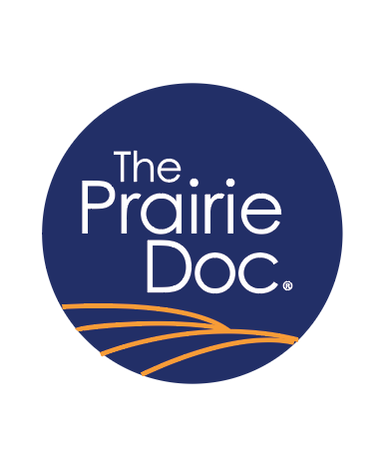|
Prairie Doc Perspective Week of July 21st, 2024
“A Hidden Issue” By Leah Hendrickson, MSW, LCSW, QMHP Mental health treatment within the criminal justice system plays a pivotal yet often overlooked role in both the well-being and rehabilitation of incarcerated individuals. This is often overlooked by the general population due to attitudes against the incarcerated and the lack of overall media attention. It is my belief that change needs to take place. Firstly, while many in society have negative outlooks on incarcerated or previously incarcerated individuals, most fail to realize that approximately 45% of Americans have had an immediate family member incarcerated. These individuals are not unknown strangers, they are, have been, and will be your own family members. Furthermore, the vast majority of incarcerated individuals will be released from their correctional facilities at some point in time. This is where the importance of rehabilitation needs to be stressed in order to prevent a revolving door back into the criminal justice system and to promote safer communities. One way this can be done is through consistent and quality mental health treatment for incarcerated individuals. Access to mental health services can profoundly affect not only an individual's experience behind bars but it can also reduce the likelihood of recidivism (reoffending). Many incarcerated individuals grapple with various mental health issues, including depression, anxiety, substance use disorders, and post-traumatic stress disorder (PTSD). These mental health issues are often exacerbated or even created by the stresses of incarceration itself. Providing quality and consistent treatment can alleviate suffering and enhance coping mechanisms, thus fostering a safer and more humane environment within correctional facilities and beyond. The research is clear, untreated mental health issues increase the risk of reoffending. Access to mental health treatment aids in equipping individuals with tools to not only effectively manage their conditions within the walls but also reintegrate into society upon release. How can we increase access to mental health treatment to incarcerated persons? Firstly, we need to acknowledge the issue. Secondly, we need to recognize and take on the systemic barriers that hinder the delivery of mental health treatment within correctional facilities. These barriers include but are not limited to the attitudes surrounding incarcerated peoples, attitudes surrounding the criminal justice system itself, overcrowding, lack of staff, and insufficient funding resources. While we also need to focus on the implementation of quality education in terms of mental health, interpersonal skills, and coping skills within our homes and our educational facilities to aid in the prevention of incarceration, we also need to support incarcerated individuals following their release from correctional facilities. This requires a multifaceted approach, including investment in community mental health resources, diversion programs, and reentry support. In conclusion, the prioritization of mental health treatment within the criminal justice system is essential for the promotion of individual well-being, rehabilitation, and successful reintegration of incarcerated individuals into society. This approach is not “soft on crime,” it instead embodies the ability of empathy and accountability to co-exist. The road to a safer and happier community takes all of us. We must not forget about those out of sight. Leah Hendrickson specializes in treating individuals who are currently or formerly incarcerated. She also provides outpatient counseling services for adolescents and adults struggling with anxiety, depression, abuse, stress management, cultural diversity, interpersonal issues, and trauma related to sexual violence. Her eclectic therapeutic style incorporates cognitive behavioral therapy, strength based therapy, dialectical behavioral therapy skills, solution focused therapy, and mindfulness techniques. She currently works at Avera in Brookings, SD and can be contacted by phone at 605-692-2790. Follow The Prairie Doc® at www.prairiedoc.org and on Facebook and instagram featuring On Call with the Prairie Doc® a medical Q&A show celebrating its 22nd season of health information based on science, built on trust, on SDPB and streaming live on Facebook most Thursdays at 7 p.m. central. Prairie Doc Perspective Week of July 14th, 2024
“If your happy and you know it clap your hands” By Nikki Eining, CSW-PIP, QMHP “If you’re happy and you know it clap your hands.” A song familiar to all of us. However, how familiar is the awareness of our body clues of feeling happy to all of us to truly “know it”? Recognizing body clues and sensations to aid in the next steps of labeling emotions is the first key skill in emotional intelligence. Unfortunately, these are not skills we are taught. Mental health development across the lifespan is as vital as physical and cognitive development. Understanding the biology of our nervous system, the sensations and body clues linked to emotions, and the outcomes of attending to these sensations and body clues, allows us to increase wanted outcomes within our lives. There is a growing trend towards normalizing the practice of developing mental health skills among adults, mirroring the emphasis long placed on physical and academic education. This shift recognizes that mental well-being is integral to overall health and productivity in adulthood. Initiatives promoting mindfulness, stress management, and emotional resilience are gaining traction in workplaces and community settings. Employers are offering resources such as mental health days, counseling services, and workshops on mental health topics. By prioritizing mental health alongside professional development, organizations aim to create healthier, more productive environments where individuals can thrive personally and professionally. This holistic approach acknowledges that mental health skills are essential for navigating the complexities of adult life and achieving long-term well-being. Dr. Mark Brackett, from Yale University, is renowned for his work on emotional intelligence and the role of emotions in learning, decision-making, and overall well-being. Brackett's research and teachings focus on how sensations in the body signal emotional states and how acknowledging these feelings can enhance emotional regulation and decision-making. He emphasizes the significance of recognizing comfort levels as a crucial aspect of emotional awareness, suggesting that attunement to one's emotional comfort can lead to better self-regulation and improved interpersonal interactions. Practicing these skills is as simple as getting curious about what is happening within our body and noticing if our body is comfortable or uncomfortable. Regularly check in with yourself throughout the day to assess your emotional sensations. Ask yourself how you're feeling and whether any discomfort or stress is present. Get curious about yourself. Developing emotional awareness and comfort with these skills is a gradual process that requires patience, self-compassion, and consistency. Be gentle with yourself and celebrate small improvements along the way. By incorporating these practices into your routine, you can cultivate greater emotional awareness, understand your comfort levels more deeply, and create more outcomes you desire to have. You will also truly be able to live the song, “If you’re happy and you know it clap your hands.” Nikki Eining is a private independent practice licensed social worker who serves as the Statewide Pediatric Mental Health Care Access Program Coordinator for The USD Center for Disabilities and Owner of Grace Grit Growth Counseling LLC in Brookings, SD. Nikki brings a diverse set of experiences and passions spending over 18 years working in the mental health field. Her previous experience has focused on supporting youth and families in office, school, and community settings without outpatient behavioral health services and prevention programming. She has professional experience in clinical mental health, education, research design, non-profit, program development, and trauma-informed care practices. Nikki is passionate about trauma and healing-informed practices, the power of protective factors and collaboration across communities to help decrease barriers for youth and families. Nikki is a Theraplay Level 1, 2 and Group trained therapist, SAPST trained prevention provider, and an ACE Interface Certified educator. Follow The Prairie Doc® at www.prairiedoc.org and on Facebook and instagram featuring On Call with the Prairie Doc® a medical Q&A show celebrating its 22nd season of health information based on science, built on trust, on SDPB and streaming live on Facebook most Thursdays at 7 p.m. central. Prairie Doc Perspective Week of July 7th, 2024
What’s in a (Medical Specialty) Name? By Jill Kruse, DO Doctors are taught medical terms and jargon in medical school like a secret code. Many medical terms are rooted in Greek and Latin. Over the course of our training, these words become second nature and we become fluent in this medical “language”, although we are also expected to talk to our patients using simple terminology. However, most specialties in medicine still use the original Greek and Latin roots for their names. Once you know where these names come from, everything makes sense. Most names start with a Greek or Latin word followed by “ologist” or “ology” from Greek word “Logos” which means “the study of” or “Science of”. Instead of calling themselves a “heart doctor” we call them Cardiologists. Cardiology comes from the Greek word “Kardia” which means “heart.” This trend follows for several other specialties. Lung doctors are Pulmonologists from the Latin “Pulmon” which means “lung”. Obstetrics is from the Latin term “obstetrix” which means “midwife” or literally, “one who stands opposite”. However, Gynecologist comes from the Greek term “gyne” meaning “woman”. Liver doctors are called Hepatologists using the Greek terms “Hepar” or “Hepato” meaning “of liver”. Hematologists are doctors who study blood and the term comes from the Greek work “haimo” meaning “blood”. Your skin specialists, the Dermatologists, get their name from the Greek work “Dermatos” which means “skin” or “hide”. The Nephrologists, or kidney doctors, have taken the Greek root for kidney, which is “nephros” to get their name. Neurologists study nerves, and the Greek term “neuro” or “neuron” means “string or nerve”. A Pathologist looks at tissue samples under a microscope in order to diagnose diseases. Their Greek root “Pathos” comes from the terms for “suffering” or “disease”. This branch of medicine looks for the cause, development, as well as the natural progression of diseases. The term anesthesia was first used in the 1880’s, but it also comes from the Greek prefix “an” which means “without” combined with “aisthesis” which means “feeling” or “perception”. That describes their goal for patients during surgery – to go “without feeling” pain during a procedure. Just when you think you know the rules, there is Endocrinology. Endocrinology studies the endocrine system which are the organs in the body the secrete hormones. “Endo” is the Latinized form of the Greek word “krinein” meaning “secreting internally”. The term Rheumatologist is not quite as literal as some of the others. They specialize in diseases like arthritis and the name originates from the Greek word “Rheuma” meaning “that which flows” or “current/stream”. This comes from a 17th Century idea that arthritis would flow throughout the body affecting many areas. Hopefully this helps “crack the code” of why different specialties have such different and unique names. You can impress your friends and family with this newfound knowledge. However your Cardiologist will be just as sweet if you call him/her a “heart doctor”, because as Shakespeare’s Juliet asked, “What is in a name?” Jill Kruse, D.O. is part of The Prairie Doc® team of physicians and currently practices as a hospitalist in Brookings, South Dakota. Follow The Prairie Doc® at www.prairiedoc.org and on Facebook and Instagram featuring On Call with the Prairie Doc®, a medical Q&A show providing health information based on science, built on trust, streaming live on Facebook most Thursdays at 7 p.m. central. rairie Doc Perspective for the Week of June 30th, 2024
“What to do about Marijuana?” Tom Dean, MD There are so many questions. Is it safe? Does pot smoking lead to the use of hard drugs? What is the risk of pot smoking during pregnancy? Does marijuana have medical value in treating disease? Does smoking pot relieve the side effects of cancer treatment? On each of these questions we have information – and lots of opinion. The reality is that on none of these questions do we really have clear cut answers. In spite of decades of experience there is still a serious shortage of reliable, scientifically valid research on the effects of marijuana on the human body. This deficit has resulted primarily from two factors. First, marijuana has been classed by the government as a Schedule I drug, meaning that it does not have a legitimate medical use (same category as heroin and LSD). This means that it has not been readily – or legally - available to medical researchers who are interested in trying to answer these questions. Secondly, the pharmaceutical industry has not shown interest in trying to develop marijuana into a traditional prescription medication. So what is the public to do, especially when the issue of “legalization” is on the ballot? Regarding safety, the impression among the public has been that marijuana is relatively safe, safer than alcohol and tobacco. Today we are learning, however, that such impressions are largely unreliable. This is partly because the marijuana on the market today tends to be significantly more potent than what was previously available. Furthermore, studies are emerging which show that risks are greater than previously recognized. The American Heart Assn. recently published a survey showing marijuana use, especially prolonged use, may be associated with an increased risk of both heart disease and stroke. An article in the Journal of the American Medical Association in 2023 showed that marijuana use during pregnancy, especially if continued throughout pregnancy, was associated with adverse outcomes. What about “medical” marijuana? As a physician with 40+ years of experience, my impression is that there probably are some medical benefits from the components in marijuana. The problem, and it is a major one, is that here again we have an abundance of claims and very little good science on which to evaluate those claims. How do we put all of this together? Bottom line – marijuana use may well have some benefits but there clearly are risks – risks that are being more clearly defined and are probably greater than previously appreciated. As all too often happens, the politics has gotten ahead of the science. Tom Dean, MD of Wessington Springs, South Dakota is a contributing Prairie Doc columnist who has practiced family medicine for more than 40 years. He served as a member of the Medicare Payment Advisory Commission. For free and easy access to the entire Prairie Doc® library, visit www.prairiedoc.org and follow Prairie Doc® on Facebook featuring On Call with the Prairie Doc® a medical Q&A show streaming on Facebook and broadcast on SDPTV most Thursdays at 7 p.m. central. |
Archives
July 2024
Categories |
 RSS Feed
RSS Feed


